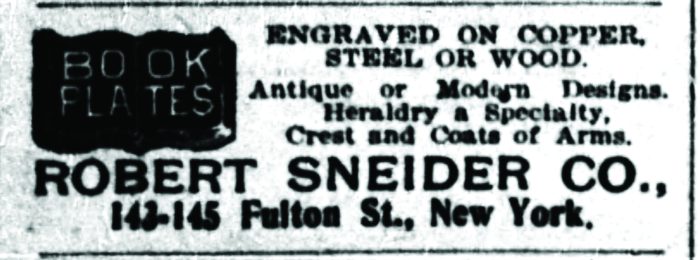Sweet Sensation
The expression “like a kid in a candy store” took on an entirely new meaning recently when I became aware of a medal issued in 1893 for the World’s Candy Exposition. I don’t usually purchase exposition medals, but something about this one whetted my appetite. Although it might have had something to do with my sweet tooth, more likely it was because I thought it would be a tasty topic for a column.
The earliest mention I found of the event was in the August 4, 1893, issue of The New York Times. An article titled “Candy Makers to Have a Show” informed readers that the exhibition known as the American Confectioners’ World’s Candy Exposition would open on the evening of November 6 and continue for three weeks. I assume that November was selected so it wouldn’t compete with the Columbian Exposition, which closed October 31. The article stated that
“displays will be made in all forms of candies, glace fruits, chocolates, cocoas, Christmas tree and wedding ornaments, chewing gums, confectioners’ supplies and machinery, nuts, raisins, fruits, ice cream and ice cream machinery, waxed papers, bonbon boxes, paper bags, candy-shop fixtures, flavoring and root beer extracts, soda water and soda water fountains, licorice, fancy cakes, &c.”
To sweeten the deal, it was advertised that every lady
purchasing a ticket would be given a free box of bon bond.
After reading the article, who could resist the temptation to visit the exposition, especially considering the fact that admission to the show was only 25 cents, or 15 cents for children. To sweeten the deal, it was advertised that every lady purchasing a ticket would be given a free box of bon bons.
The Lenox Lyceum was selected as the site of the exposition. Located on the southeast corner of 59th Street and Madison Avenue, this large and eloquent concert hall opened in 1889. It was described as “one of the most perfect auditoriums for the purpose that has ever been built. Its acoustic perfection is said to be marvelous.” Since it included a banquet room and numerous meeting rooms, it was ideal for a variety of events.
A Candy Lover’s Dream
A large number of people were lined up at the door when the show opened. In addition to more than 2,000 exhibits, described as “toothsome delicacies,” there was a variety of other attractions, including a caramel-wrapping match between two teams of four ladies. The best “fancy stick candy-makers” of Boston and New York engaged in a candy-making contest, and 10 female employees of a Philadelphia firm staged an exhibition of chocolate dipping. On the stage in the lower hall, candy makers produced large batches of their products and passed them out to visitors.
The November 11 edition of The Evening World newspaper reported that “the first week of the World’s Candy Exposition at the Lenox Lyceum has been satisfactory to the managers and the exhibitors.” They added that “the music is very good and the programme is varied every day.” Visitors certainly would have gotten their fill of candies and chocolates, since every exhibitor handed out samples.
A Toothsome Token
The piece is listed as ND 260-K in the current edition of the Atwood-Coffee catalog. Since my discovery in 1989, a couple more examples have been found; uniqueness is often a temporary characteristic with tokens of this sort. It had been many years since I sold my token, and I was reminded of it when I saw Dick’s listing. I decided to see what I could learn about Mr. Young and his business.

(Photo: David Schenkman)
Struck in white metal (a tin alloy), the obverse of the 52mm medal features a globe in the center. Atop the globe, a figure representing Liberty perches with a shield to her left. Below the shield is an eagle with wings spread and E. PLURIBUS UNUM on a banner in its beak. WORLD’S CANDY is around the scene on the left, and EXPOSITION is on the right. On the reverse, a winged cherub sits on a cloud, blowing a horn with LENOX/LYCEUM on a banner hanging from it. The sun is above, and below is another banner that reads NOV. 6TH TO 25TH 1893/NEW YORK.
The signature R. SNEIDER. NEW YORK. appears in tiny letters beneath the globe on the medal’s obverse. This is the signature of the Robert Sneider Company, a business that was located at 143-145 Fulton Street in New York City. Sneider went into business as an engraver in the mid-1860s, and in the 1890s he purchased George H. Lovett’s die-sinking company. During the early 1900s, Sneider ran small ads offering “Washington, Lincoln, Grant, and McKinley medals and tablets. Send 2-cent stamp for lists.” Some of these pieces were likely struck from Lovett dies.

(Photo: New York Tribune)
Presentation Piece or Souvenir
I’ve found nothing to indicate why the medal was issued. The cost to have it struck would have been far too high for it to have been used as a giveaway. This leaves two possibilities: that it was presented to those exhibiting at the exposition, or that it was sold as a souvenir.
The show closed on November 25, and it was proclaimed a success, both from the standpoint of attendance and the number of exhibits. In fact, it was announced that it would be an annual event, and that most of the exhibitors had already expressed their intentions to return in 1894. Despite this, I’ve been unable to find anything to suggest that any subsequent candy expositions were held. Were it not for the medal, it would now be a completely unknown event.
I welcome readers’ comments. Write to me at P.O. Box 2866, La Plata, MD 20646. If you desire a reply, please enclose a self-addressed, stamped envelope.
A version of this article appears in the May 2024 issue of The Numismatist (money.org).
